-
Posts
4,734 -
Joined
-
Last visited
-
Days Won
118
Content Type
Profiles
Forums
Resource Library
Events
Gallery
Blogs
Store
Community Map
Posts posted by Mayner
-
-
Kato Unitrak https://www.unitrack-kato.com/ has a very good reputation among N Scale modellers with the advantage of being ready ballasted, may be a better option than Peco or other track systems
-
Lenz, NCE and Digitrax have a reputation of being bullet proof in terms of reliability and durability and all produce basic starter systems. All three brands have a reputation of being conservative in their techology, but have the advantage that their starter sets are upgradable from basic to intermediate to advance level. I still use the command station from my first starter set an intermediate level Digitrax Empire Builder bought in 2000, upgraded with additional Throttles (hand held controllers) wireless radio.
The basic Digitrax Zephyr express set has the capability to operate 20 loco addresses and 20 throttles, with a 3amp power capacity and read-write CV addresses, the Empire Builder has been replaced by the Evolution Advanced set had a 5amp power capacity and could control 22 locos/throttles.
I don't know of the supply situation with NCE and Digitrax in the EU, apart from the starter sets, I bought Digitrax Throttles and Accessories direct from "Tonys Trains" in the United States while living in Ireland and NZ, better proces despite shipping and import taxes
-
 1
1
-
 1
1
-
-
1 hour ago, Irishswissernie said:
First decent photo of the CIE Bulk Grain wagons converted from H vans during the late 50ss early 60s, the Brake Van 23596 appears to have had some damage repairs to the veranda planking at one end only
-
 2
2
-
-
On 5/6/2023 at 6:39 AM, Leyny said:
Sometime in the mid-noughties, I picked up a few of these Dapol wagons in Mark's Models. They're purportedly old CIE loose-coupled vans and all numbered 315. Can anyone here tell me if these are a fairly accurate model of the prototype, a passable imitation to the not-so-fussy or bear little or no resemblance a la the Lima wagons of the '80s?
The Dapol/Marks Models? vans are basically the equivalent of British Railways MK1 coaches painted in CIE Green or Black and Tan schemes, looks close to a CIE wagon from 2'-3' distance, but quite unlike the vans that ran on CIE.
The Dapol van is basically a model of an early 1950s BR planked sided van, it looks similar to vans built by the GSWR and GSR from 1917 onwards although the Irish vans were lower, had planked ends and the brake gear was completely different
I have produced a 3D printed models of the GSWR van and early versions of the CIE standard covered H van in kit and rtr form, but its not practicable to compete on price point with mass produced Dapol models.

https://jmdesignmodelrailways.com/
-
 5
5
-
 1
1
-
 1
1
-
-
I "transitioned" to DCC over 20 years ago, but also play about with DC and Battery-Radio remote control.
Intermediate/advanced Vs basic systems.
At the time I was building an N Gauge American walk-around style layout and my 1amp DC controller did not have sufficient power to operate 3-5 loco multiple loco consists hauling 20-30 car trains, the train physically slowed down when I added additional locos.
I went for a Digitrax "Empire Builder" an intermediate system which had a hand held throttle and a 5amp booster/command station capable of running/storing up to 22 loco addresses. https://www.digitrax.com/products/retired/starter-sets/eb/
The Empire Builder proved ideal for controlling the N gauge layout both in Ireland and a larger version started after we moved to New Zealand and later a G Scale garden layout, the main draw back was that I quickly used up the 22 loco addresses while running trains with multi-unit consists and had to adapt work-around such as giving all locos in a consist the same address to run the N gauge layout.
The main advantage of choosing an intermediate system produced by a specialist DCC manufacturer over a more basic system produced by train manufacturer was that the system was expandable and compatible with other DCC products, I added infrared and later radio wireless capability by adding IR and Radio RC modules to the system and additional throttles, computer route setting and loco programming using JMRI (Java Model Railway Interface) by adding a network adaptor (Digitrax and "Loco Buffer", points controlled by Lenz, Digitrax and other brands of stationary controllers and Tonys Trains (USA) circuit breakers (divide the layout into a number of separate sections to avoid a system shut down in the event of a short or a fault)
20+ years later I still use the original Command Station Booster to control a small OO gauge shunting layout.
Just like cell phone users DCC users have developed strong almost religious loyalty to a particular brand as the majority of DCC manufacturers have developed a unique user interface.
Sound
I discovered DCC sound in the mid 2000s and built up a collection of American sound equipped locos in HO & On30 but disposed of the collection when I started building a railway in the garden, most of my Garden railway locos have digital sound, but like the HO & On30 stock its usually runs with the sound muted.
"Standard" Function Buttons
In recent years EU and US decoder/controller manufacturer have gone in separate directions in terms of Function controls
In the "old days" Digitrax Throttle Buttons controlled.
F0 Headlights f/r
F1 Bell (American steam loco)
F2 Whistle/Horn (non-latching)
F3 Coupler (knuckle coupler coupling up sound)
F 4-7 user selectable
F8 Sound mute
F9-28 user selectable
F4-5 As far as I recall for controlling head and tail lamps independently.
Curiously Radio Control Systems battery-radio share similar F0-3 functions F 4 crew sounds
The Future.
I will probably stick to battery RC in the garden and DC or static for most of my Irish Irish locos as I get more enjoyment from building rather than running models and probably hand on to DCC for the day we have to downsize to a smaller home and N gauge
Gets complicated with my sound equipped MM 121 and IRM 001 with F1 controlling engine start up and shut down & F3 horn (horrible sound)
-
 1
1
-
-
Due to their massive scale both on the bog and at the power stations the milled peat operations don't translate easily into a model in 4mm scale or larger. Not really interesting from an operating perspective basically merry-go-round 15 wagon trains running between the stock-piles on the bogs and reception sidings/discharge points at the power stations. There was a 'modelable" motive power depot, fueling point near Ferbane suitable for a compact MPD sort of layout avoiding the need to model a power station or a full train of wagons
The older/smaller sod and moss peat operations like Allenwood and Ballivor tended to be more achievable in scale and interesting operationally. At Allenwood the ESB had its own Ruston and Hornbsy locos for shunting wagons beteeen the BNM reception sidings and power station. At both Portarlington and Allenwood the sod peat wagons (less bogies) were hoisted by crane to the top of the power station before being discharged into a storage bunker, Ballivor used end tipplers for unloading 4w peat wagons into trucks. The older power stations and smaller plants tended to use modified standard Ruston and Hornsby locos rather than Hunslet Wagon-Masters.
-
8 hours ago, Branchline121 said:
Would I be right in saying the Dublin & Lucan tramway was the closest we got to the Maynooth loop, even if it only had interchanges on its east side and was a narrow gauge tramway?
Also, it seems that the DART Interconnector may be back on track, it seems if the whole plan goes through Dublin will have a network similar to that of an S-Bahn.
The main draw back with Lucan North and South stations was their distance from Lucan and its attractions an important destination for day trips from the city during the late 1800 early 1900s. The narrow gauge tramway had the disadvantage that it did not run through to Dublin City Centre passengers had to change trams at Cunningham Road.
A short lived extension of the Dublin and Lucan reached Leixlip (Salmon Weir Inn) but was abandoned when the line was re-gauged from 3' to 3'6" and electrified, there were also plans at one stage for a Lucan Spa to Celbridge Line. The DUTC took over re-gauged to 5'3 and electrified and integrated the Dublin and Lucan into its tramway system during the 1920s with a through service from "The Pillar to Lucan' which were discontinued in 1940
The Dublin and Lucan was the nearest thing in Ireland to a US style Interurban Railway
-
 1
1
-
-
Drew Donaldson commented about one GNR(I) (operating) modeller who built BCDR locos and hauled stock to work trains that were worked by diesel railcars on the prototype "because no one wanted to see diesel trains"
The knowledgeable observer knew that trains operated by a BCDR loco represented a diesel railcar set on the prototype.
Interestingly families visiting a UK narrow gauge heritage railway on which I volunteered sometimes could not recognise the difference between a steam and a diesel loco, they had a cab at one end and a chimney/exhaust pipe at the other.
Naught so funny as folk as they say!
-
 3
3
-
-
2 hours ago, GSR 800 said:
An interesting one is the 'Maynooth loop'. It seems to be to allow Sligo-bound trains to utilise the quad track from Heuston to get around Dart + services as far as Maynooth.
The "Maynooth Loop" is a very old proposal, I have a sneaking suspicion the the Dublin and Meath was originally planned to connect with the GSWR near Clondalkin before falling under MGWR control, more recently the GSR planned to connect the ex-GSWR and MGWR lines in the Lucan-Maynooth area and divert ex-MGWR line trains to run to and from Kingsbridge.
While its encouraging to see Arup recommending building lines on new alignments to reduce congestion increase speed, its difficult to see the Irish or UK Governments approving investment in new lines because of the level of borrowing required to construct the lines and the level of operating subsidy.
Its much simpler to fund road-schemes on a users-pay basis, through road tolls, road taxes, vehicle registration fees, and excise on fuel, these taxes can be adjusted to minimise the level of Government funding required to build and maintain the roads, pay carbon taxes due and the road user both private motorists, and commercial operators take on the risk of buying and financing the vehicles/rolling stock. "Fines" for Ireland failing to stay within its emission targets are simply recovered through higher carbon taxes (fuel duty) on the road user.
It will be interesting to see how governments recover from the loss in fuel excise duty with the switch to electric, bio-powered and hydrogen vehicles, increased VAT on electricity?
-
31 minutes ago, Niles said:
I remember back in the 2000s online forums (who remembers the MSN groups?) people joked about the idea of a 450 being preserved one day, yet, here we are (and it's really come into its own too).
I know @jhb171achill loves 450s...

Similarly 2600s were once seen as "just railcars" but our jaunt from Cork to Waterford in one proved more popular than even its organiser (eejit I hear) envisaged. Everything has its time...
Apparently enthusiasts spat on the Metrovick diesels when they first appeared in service at Westland Row station during the 1950s.
The Mitsui 2600 railcars are continuing to out-live their AEC predecessors that barely lasted 20 years in service mainly because British Leyland ceased to supply engine/gearbox parts.
Although they were uncomfortable the BREL MK3 Multiple Units including the NIR 450 Class had a certain Buck-Ugly charm.
-
 3
3
-
-
3 hours ago, Mike 84C said:
All I will say in response to this thread is when you buy your donor coaches make very sure you get ones of the right length. Two of mine were fine so finished eaons ago. One was a couple of mm shorter which I only discovered after I had done all the prep work and put the adhesive on the sides with all the little clamps to hold stuff in place. AND, and and its a wonder my swearing was not heard across the Irish sea. So beware !!

The coach sides were designed to fit the Dapol Stanier 60' Side Corridor coach. Dapol no longer appear to produce these coaches, though they may appear on the second hand market under Dapol, GMR or Airfix branding.
A BR Van is probably the best option for use with Park Royal during the IE era, when the majority of the older vans including the 32XX had been withdrawn from service.
-
 1
1
-
-

1 possibly 2 kits in stock @$28NZ , no plans to re-stock when sold out.
I would need to check shipping costs.
-
 2
2
-
-
Where do I start:
1. Replace damaged rear coupling G gauge 1:20.3 scale DRGW K27 so I can resume playing trains in the garden.
2. Garden railway track maintenance, weed and scrub clearing.
3. Assemble and complete OO Gauge MGWR 2-4-0 for client
4.. Complete final assembly of 2X52 Class locos in storage since 2022 including ordering wheelsets for 1 loco.
5. Final assembly Tin Vans and GSWR coaches.
6. Complete buildings for OO gauge dock layout.
7-100
-
 1
1
-
-
O-16.5 Peckett after completing D2 and No29 what can I possibly say!
I need to get my act together and finish at least one of the unfinished projects on my work-bench, but which one?
-
 1
1
-
 1
1
-
 1
1
-
-
The GSR/CIE rebuilt 67 J15s or approximately 60% of the Class with Z superheated boilers, the remainder of the class retained the 4'4" saturated boiler with round topped firebox, both types remained in use to the end of steam.
Superheating was intended to reduce running costs by reducing coal and water consumption.
The (high) Type C Tenders were more common (67)than the (low) Type B Tenders (28) and Type C Tenders would have become readily available for use with J15s from the mid 1950s onwards as larger post 1900 locos were scrapped.
Similarly many of the ex-MGWR version of the "Standard Goods" ended up with large tenders from scrapped post 1900 locos. CIE no longer had a use for and scrapped many of its larger more modern steam locos during the mid-late 1950s but had work for the humble J15 on beet specials, pw trains and some branch lines to the end of steam.
The CIE section of the Irish Railway Transports Smugmug site is an excellent source of photos on Irish Steam
https://transportsofdelight.smugmug.com/RAILWAYS/IRISH-RAILWAYS/CORAS-IOMPAIR-EIREANN-STEAM/
-
 1
1
-
 2
2
-
 3
3
-
-
1 hour ago, DJ Dangerous said:
What do the differences between the four variants imply?
Did all four variants run concurrently or did each one replace an earlier one?
Or were there two and two?
The website says:
"GSR / CIE Class 101 (J15) with 'Z' Boiler 0-6-0
Type B-(Low) Tender Nº146 - Grey with Logo £315.00 + P&P Taking Orders
Type B-(Low) Tender Nº125 - Grey with Logo £315.00 + P&P Taking Orders
Type C-(High) Tender Nº186 - Grey with Black Smokebox
£315.00 + P&P Taking Orders
Type C-(High) Tender Nº179 - Grey with Black Smokebox
£315.00 + P&P Taking Orders
All above locomotives available in black."
The J15s (both superheated and saturated) ran concurrently with type A,B & C Tenders in GSR/CIE days.
Its probable that the larger Type B and C Tenders were coupled to locos used on long distance goods trains and cattle specials because of their greater water and coal capacity, the smaller tenders on locos on branch line and trains calling at all stations. The Type B tenders introduced for use with 4-4-0s used on Cork Express trains during the 1880s, Type C with the larger locomotives (4-4-0,O-6-0,2-6-0 and 4-6-0) locos introduced from 1900 onwards. Tenders tended to be swapped around between locos during GSR/CIE days with J15s running with all 3 types and large 4-4-0 and 0-6-0 types running with small Type A tenders. The low Type B tender appeared to be less common that the high Type C tenders.

Superheated J15 106 with Type A Tender Foynes 1955, the 'thing" on top of the chimney appears to be a spark arrestor at the time Foynes handled petrol and oil traffic.

Superheated J15 137 with a Type B Tender Limerick 1955.

Saturated round top firebox J15 161 with high Type C Tender Newcastle West 1948.

183 with high Type C tender Waterford 1955
-
 5
5
-
 1
1
-
 1
1
-
-
Built a pair of MIR 121 on Athearn SW1500 chassis back in the 90s not bad by the standards of the time, though the less said about the tippex lining the better.
The whitemetal MIR 121 and 141 on Athearn chassis were excellent "layout' locos could pull any train and operate reliably for several days under exhibition conditions.
I got rid of my Irish "modern image" stuff a few years later, the models were relatively crude and less satisfying to build compared with what could be achieved with contemporary etched kits
-
 11
11
-
-
3 hours ago, Branchline121 said:
Good to see there’s a future in sight for Irish Rail, even if it doesn’t include the Kingscourt line… I do wonder though, with the EU’s first railway directive having been adopted I imagine we might see companies like DB Cargo operating services around the country, although I imagine Irish Rail would issue a gnarly operating fee.
IE implemented the directive by opening up access to the rail network about 15 years ago, but apart from the Railway Preservation Society of Ireland no one appears to have been interested. https://www.crr.ie/economic-regulation/access-to-the-rail-network/. There was talk in the early 2000s of a UK "Open Access" operator entering the Irish Market to operate a rail borne distribution service using rail for "Line Haul" work with road delivery and collection, the business failed to take off in the UK or Ireland.
The lack of heavy industry like steel mills, motor manufacture, large rail served quarries, and large coal/bio-fueled power stations in Ireland means there is little in the way of heavy profitable freight flows for rail in Ireland. Importing Bio-fuel (sawmill waste) through Scottish ports to burn in Power Stations in the North of England and transporting stone from Somerset to London by rail has not exactly got a lower carbon footprint than ESB burning oil and coal in its coastal power stations or Roadstone supplying stone by road to Irish cities from locally located quarries.
DB Cargo and other UK 'Open Operator" success is based on serving heavy industry of a type that does not exist in Ireland and the UK Government subsidising rail access charges.
Kingscourt is unlikely to be a runner for Gypsum traffic unless Cement Limited or Gyproc paid to extend the line from its current terminus to the mines near Carrickmacross and invested in a modern fleet or high capacity wagons.
-
 1
1
-
-
5 hours ago, Darrman said:
Certainly I'd like to see it happen, but knowing this country, I won't hold my breath.
I do wonder what the idea for Cavan and Monaghan is though. Since they didn't give hint as to what towns the line might pass through I can only speculate.
Legend:
Yellow: Electrified/proposed to be under Dart+
Orange: Operational
Brown: Navan Branch - goods only
Blue: Proposed Navan railway/my guess on the Cavan/Monaghan railway
Green: Greenwayed
Black: ClosedRed dot: Operational station
Green dot: Projected locations (Navan) / my guesses (Cavan/Monaghan)
White dot: Closed stationI based my crayon-drawing speculation on the 1906 railway map. I can't think of any other route that covers both Cavan and Monaghan but the GNR from Dundalk to Clones, before turning south to Cavan town and then the MGWR on to Mullingar. Realignments to avoid town centres and the six border crossings in a handful of miles would be necessary - I placed stations in villages with at least 1,000 population on the new line.
I do wonder what the fate of the Navan Branch will be - with Tara Mines "temporarily" closed and passenger plans using the MGWR line to Navan, it doesn't appear to have any further use currently. I can't see Irish Rail deciding to introduce Navan-Drogheda shuttles - nobody would go from Navan to Dublin via Drogheda if the new railway is built, but on the other side of the coin, I can't see the new railway being built any time soon. Hopefully they at least release the draft soon - politics means the final report probably won't be released for a long time, if ever.
It would make more sense from an engineering and financial perspective to build a railway to serve Cavan. Monaghan or Donegal for that matter on an entirely new (more direct) alignment, than to attempt to re-open indirect routes that were abandoned over 60 years ago.
It would be necessary to go through the planning process and obtain powers of compulsory purchase to acquire the right of way regardless of whether its intended to re-open an abandoned route or build a line on an entirely new route. The powers to build and operate a railway were extinguished when the lines were abandoned during the 50s and 60s and the right of way disposed of to adjoining landowners. The Government/NTA have to buy back Pace-Navan trackbed from the landowners before work can start on re-opening to Navan.
Personally I think the re-opening of lines in the Border/Midlands Region unlikely to happen, relatively low population and the challenge of the Irish and UK Governments co-funding such a project, much simpler to provide subsidies for electric cars.
-
 3
3
-
-
6 hours ago, Broithe said:
We had one of these.
Idiot MD bounded into the room and thumped the big grey box by the door "How many megabytes in there, then?" - "Bloody loads, mate, that's a filing cabinet. The computer's over there, with the pretty lights on. Best not to punch it, though".
Our Japanese bloke hand-drew a graph to convince 'them' to do something. They wanted 'better evidence', than what they considered to be merely his opinion, so he got the machine to print out the graph, using the same figures. This turned into into a 'computer prediction' and it became totally true.
We had a rudimentary speech synthesiser. You could type things in and it would attempt to say them, but many things needed to be spelled in a way that would give you the right sound. We rigged it up to ask you to type your name, then it would just say "Go away, (name)", except it didn't really say 'Go away' quite so politely. A lot of names would fail to be said correctly, Geoff, David, etc, but Barry would work, and our Barry was a real technophobe. So we persuaded him to do it. He was so offended that he refused to go back in the room until it said "Sorry, Barry" whilst he stood in the doorway.
My first introduction to IT was during the late 70s when our company 'outsourced" our book-keeping to a business that had a Main-Frame computer as our business expanded.
Previously among other duties I maintained the sales and expenses ledgers manually entering and coding invoices and payments in a big Kalamazoo Ledger, my job was now to approve and code the invoices for data entry on a paper form stapled to each invoice.
Our provider sent out a "technical advisor' to our office after some unexpected glitches in the first data entry run and our "advisor" literally could not believe my working conditions in a site office on a busy construction project and he never came back again or heard of further problems with the standard of my coding. I usually carried out data entry or invoice coding in the quite and comfort of a show home or a back-office.
We later took on a full time book-keeper and I shifted to a purely managerial and technical role and no longer had to code invoices
-
 1
1
-
-
Some progress with the 3D model of the C&L Milk Van.

Step 1. was to import 2D side and end sketches I prepared earlier as templates for drawing the 3D Model
One of the quirks of my 2D CAD software is that the sketches appear as a mirror image when imported into Fusion 360 as a "Canvas'

Step 2. 1/4 of the basic bodyshell extruded as a 3D model. The Milk Vans and most wagons are symmetrical so its only necessary to prepare a detailed 3D model of a 1/4 of the model and then complete by copying and producing a mirror image.

Step 3. Extruding the framing detail, the basic extrusion includes the thickness of outside framing and I then cut away the excess material to model the depth of the framing, a process not unlike milling or routing metal or timber without sharp rotating tools, swarf and dust!

Step 4. Outside framing modelled for 1/4 of Milk Van
Planking, strapping and bolt head detail will be reproduced by extruding profiles on the model.
The next step is to produce a test print, for planking, strapping and rivet detail using different widths, depths and material thicknesses before completing the Milk Van body detail.
-
 7
7
-
 1
1
-
 3
3
-
-
The South Eastern does not appear to have had the very low platforms commons on the Cork Line and older parts of the GSWR so coaches with lower footboards may have been un-necessary at least in DSER/GSR/CIE days. The GNR(I) also appear to have fitted (or removed) lower footboards from their 6w and older coaching stock.
-
One single 15V source is adequate to power multiple point motors and capable of throwing two Peco point motors at a time such as in a crossover.
There are three wires to each Peco Pl-11 and other solenoid point motors, one common and one to each coil fed through the point switch https://www.maurienne-trains.com/images/Image/Peco/PL-11 Instructions.pdf
The common can be fed through a single bus wire to each motor, the switch wire have to be fed back to the point switches which can be located individually near the point or centrally in a control panel.
The Peco point switches can be mounted singly on the layout or grouped in a lever frame.
Although I had Peco switches, I ended up using old Tri-ang (Hornby) switches as I got them second hand for next to nothing and were fun to operate.

Bank of Tri-ang (Hornby) levers used to control solenoid point motors on an N gauge layout.
One wire from the power source ran to the lever frame, the second direct to the point motor.
Wiring Seep Point Motors Black-Common White-Coil1 (Normal) Brown-Coil2 (reverse) on a portable N gauge layout
Wiring from the point motors and track feeds was routed through a soldered tag strip to a multi-way cable connector (old style Printer Cable) between the layout and control panel.
The layout was portable with three baseboards and two banks of Tri-ang point levers to control the points on two baseboards.

DCC Wiring of Peco point motors using Lenz Stationary Decoders using colour coded wiring and screw terminal blocks.
Points are fed through a separate 15V a/c supply (orange and brown)to the 15V a/c DCC track power/control bus (black and red)
DCC simplifies the wiring leaving each baseboard essentially self contained, eliminating the requirement to run wiring from each point motor back to a separate switch or a control panel.
-
 2
2
-
 1
1
-
-
33 minutes ago, Mike 84C said:
Hey John, you alll enjoy the old USofA!! Thats a cool video I have not seen that before.

Had not heard of the grade before this trip was more interested in checking out the Clinchfield and remains of the Tweetsie narrow gauge which unfortunately did not come to pass
Back in Aotearoa or the "Land of the long white cloud" in Mid-Winter (not too cold, but very damp),
Some good stuff on operation in the early 90s when freight trains had cabooses and freight car grafetti was unknown, there is even a You Tube series on modelling Saluda Grade.
-
 4
4
-
.png.c363cdf5c3fb7955cd92a55eb6dbbae0.png)



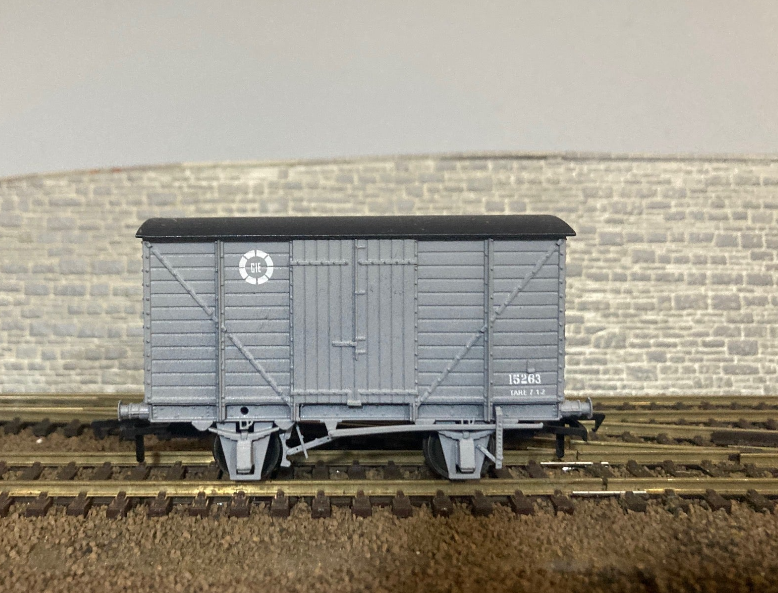
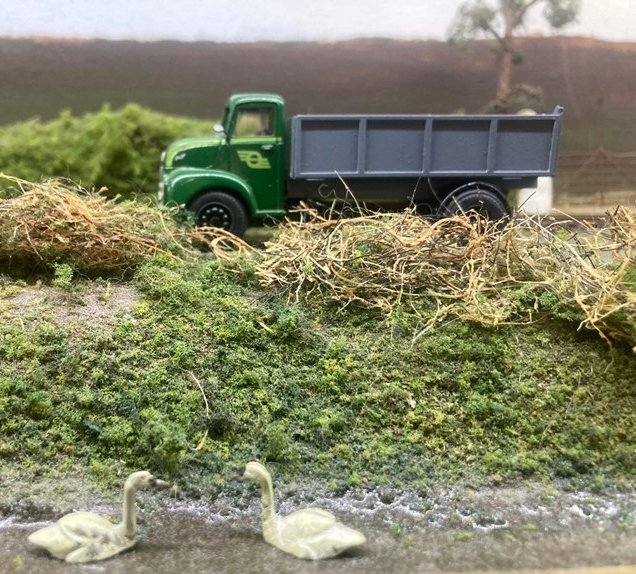




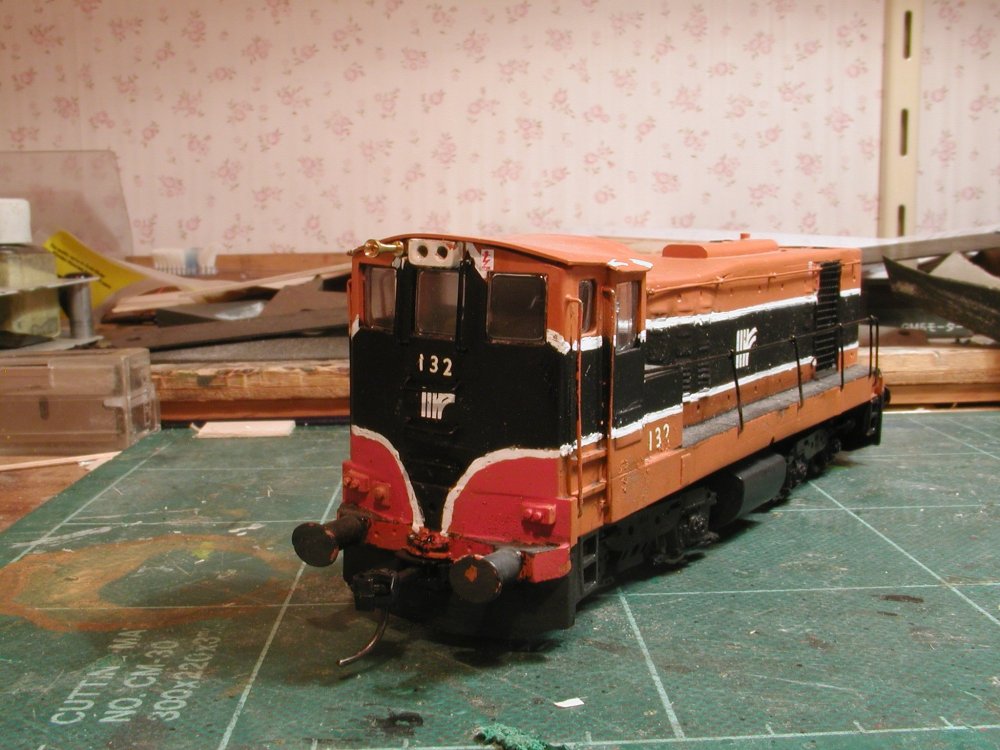
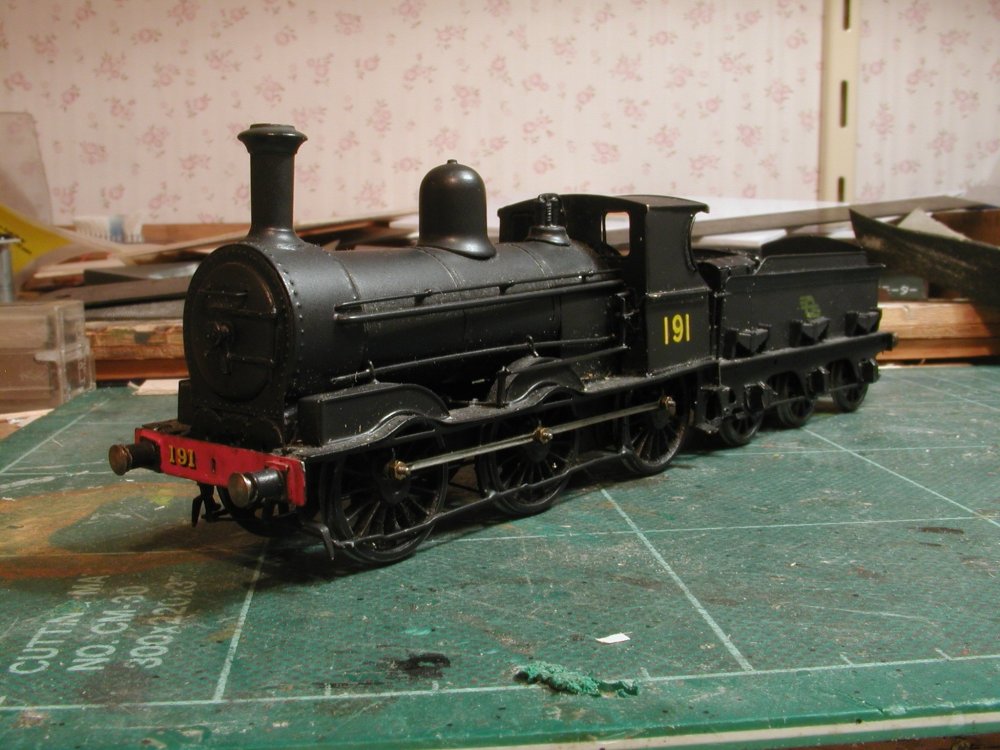
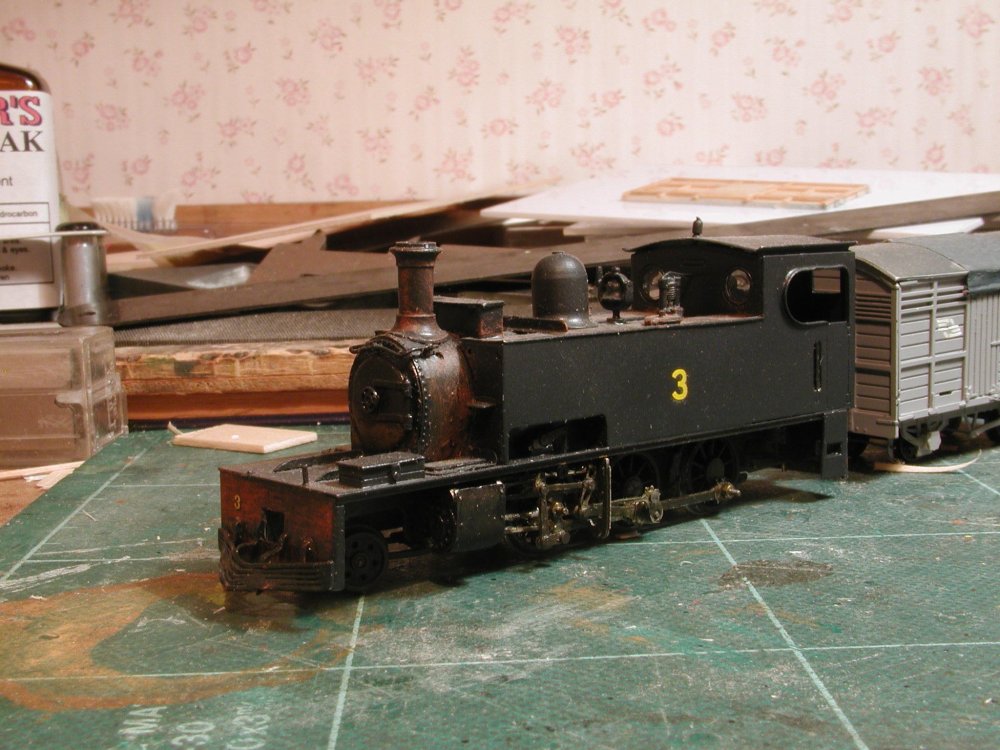
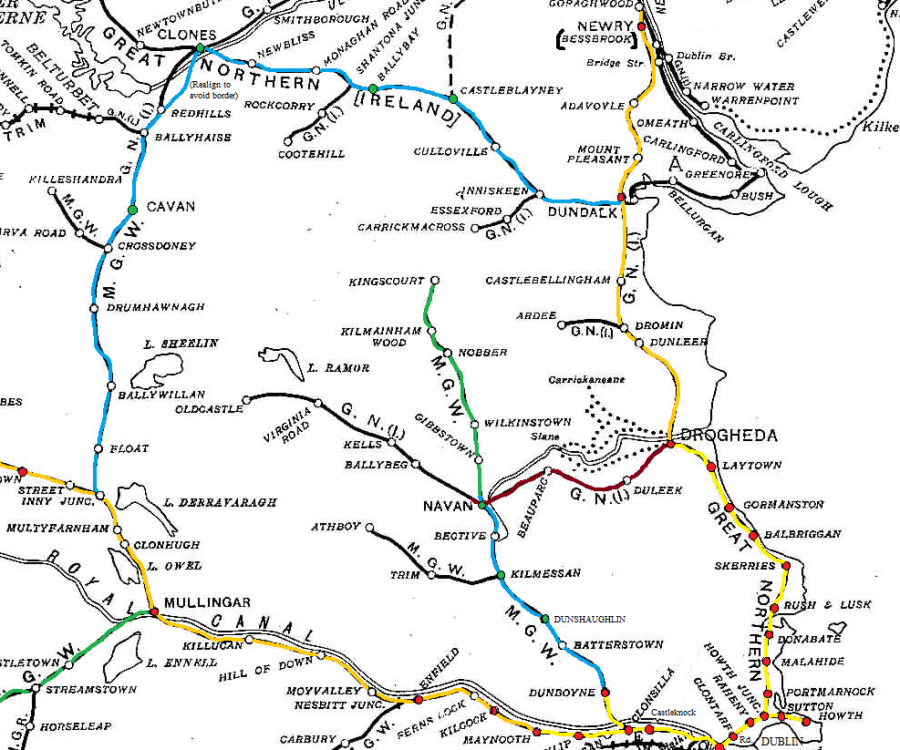
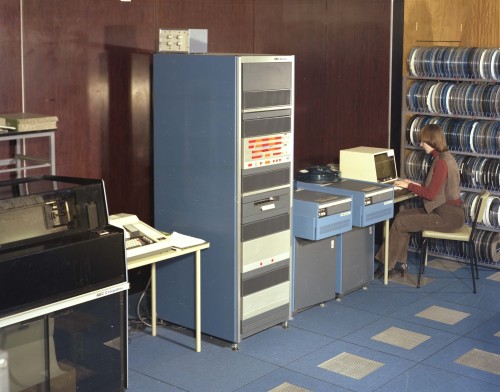

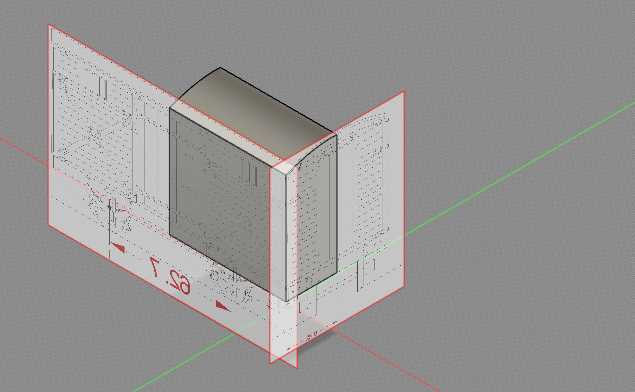
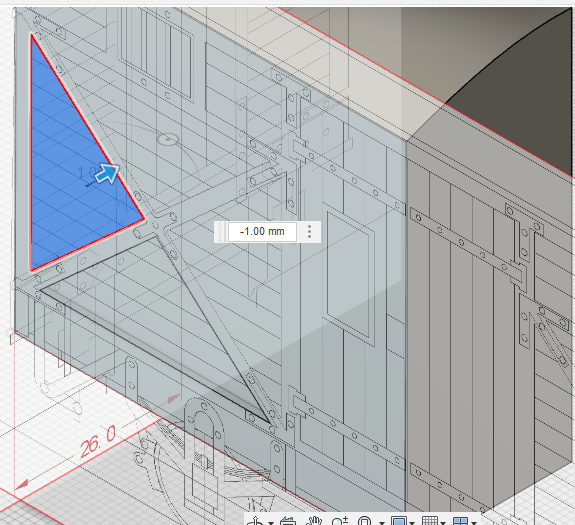
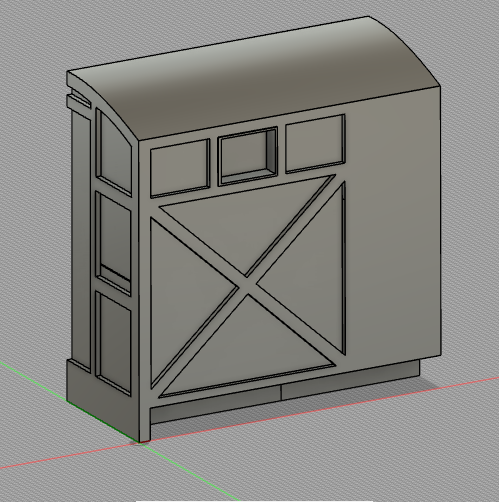
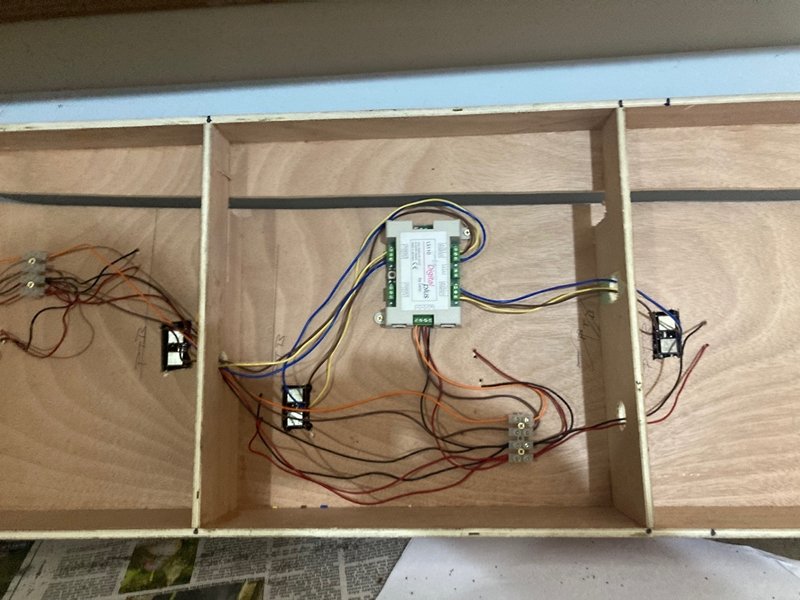
Tales From The Sketchbook
in General Chat
Posted
Very nice sketchplans, I dreamed up several fictional schemes in my teens including a largish island off the coast of Wicklow with its own railway system (independent of CIE or BR) and a short sea crossing to mid Wales. The Island had a mining and heavy industrial base not unlike South Wales and a strong sense of identity most likely populated by people of Scandanavian and Celtic descent.
Later schemes were based mainly in real places the main themes were an independent line from Dublin to the South-East via Blessington, and down the Slaney Valley to Enniscorthy and a second main line from Tullow though New-Ross to Fethard with a 'branch" to Waterford, most of this system closed during the Todd-Andrews/1st McKinsey era apart from the Blessington line which survived as a commuter rote and to serve a cement factory at Belgard.
The other theme was a narrow gauge network in the Dublin area with 3' narrow gauge lines from the Liberties area of Dublin to Blessington and Ballymore Eustace, light railway extensions of the Dublin and Lucan to Celbridge, Clane and Sallins and "Fingal" narrow gauge system linking the narrow gauge lines to the South of the City with the GNR main line at Gormonstown winding its way through Clondalkin, Blanchardstown, Ratoath, Ashborne, Garristown and the Naul carefully avoiding Slane, Balbriggan or Drogheda!